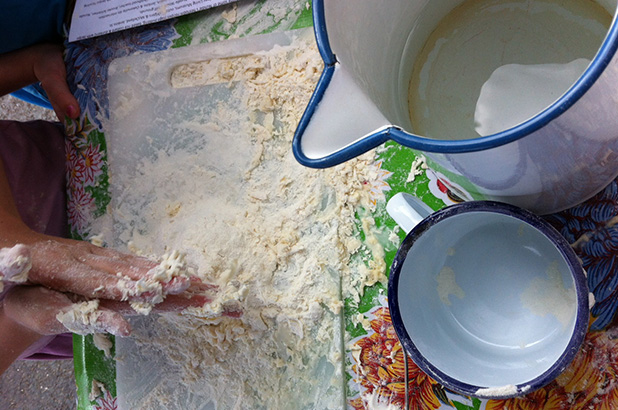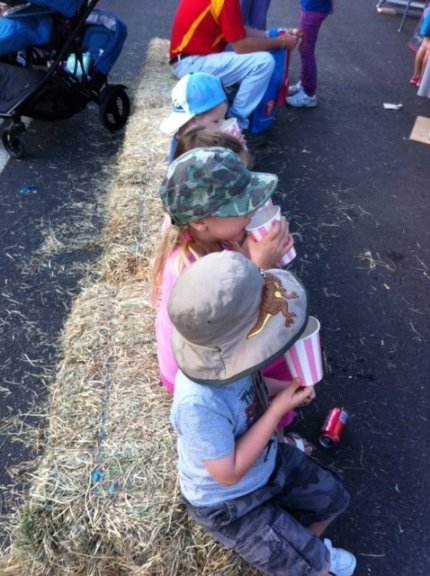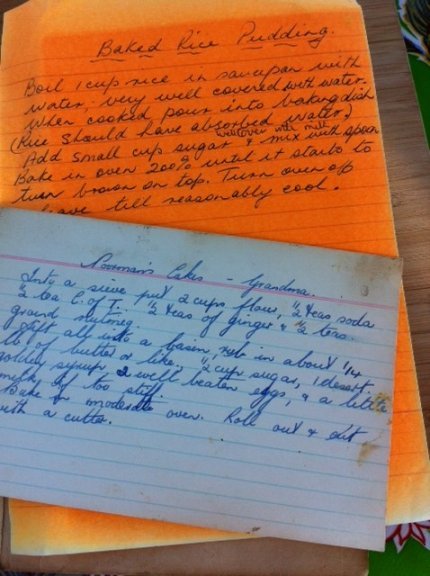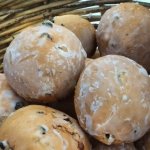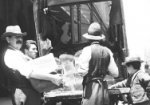Eat your history hits the road! We’ve been working with regional Councils to bring extra flavour to country festivals, cultural organisations and community events. I had the great pleasure to be in Nundle, in New South Wales’ New England region, on the Easter weekend, bringing heirloom recipes and forgotten favourites back on the menu during their Go for gold Chinese Easter festival! And this week I’m heading to Orange for their Villages of the heart project. It’s perfect timing as Orange hosts its annual Orange Apple festival so I’ll take the opportunity to visit the Farmers’ market and seek out some local apple recipes from growers and community members. Perhaps I’ll see you there?
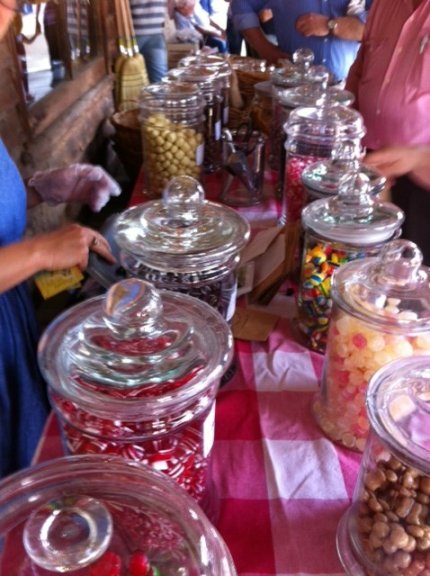
Old fashioned sweets at Odgers and McClelland Exchange Stores, Nundle. Photo Jacqui Newling © Sydney Living Museums
Nundling along…
It’s amazing what a small country town – population of 250 – can achieve with a bit of creativity and a lot of energy and passion. Over 15,000 people visit Nundle over two days each Easter for their Go for gold festival, which celebrates the town’s gold rush era in the mid-late nineteenth-century. The festival also honours the Chinese fossickers, labourers and traders who frequented or settled in the area, which has a strong resonance with Sydney Living Museums’ Celestial City exhibition, showing currently at Museum of Sydney. Some local families have called Nundle home for five generations, and the festival is an opportunity for them to celebrate their own heritage and share their history – and future – well beyond the community. The whole town gets involved, and I had a wonderful crew of volunteers helping dish out tastings and teach children how to make old fashioned lemonade – with real lemons (gasp!) and damper.
Tasting history
Local resident Megan Trousdale put a call out to local Nundlers for family recipes and cookbooks, to discover some lost or treasured recipes from previous generations. In addition to some precious heirloom recipes came reminiscences, stories and advice on traditional cookery and what I would term local ‘bush’ cuisine.
A very simple rabbit recipe is to … cut the meat into bite size pieces then flour, egg and breadcrumb them and deep fry for about 5 minutes – it’s the original popcorn chicken, except made of rabbit.
Country people have always been resourceful. When times were tough in colonial times kangaroo was a bushman’s staple and eels were a handy catch. Rabbits became equally useful once the wild population spread north from Victoria in the 1860s. The local catch could be curried or stewed, crumbed or hashed. Eels were made into patties and rabbit dressed up with bacon for a poacher’s ‘filet mignon’ or a French-style terrine.
The thing is to have a young rabbit otherwise you need to get into the soaking them in salty water.
Locals still catch rabbits in the surrounding rivers and bushland and ‘go eeling’ in the rivers and streams. We cooked up a rabbit mulligatawny using an 1864 curry powder and a Bushie’s pie – a kind of shepherd’s pie made with kangaroo rather than lamb – which were very well received from country and city-folk alike.
Sweet treats
Overwhelmingly, the fondest memories are for sweet treats, and lost delights such as Nancye Swain’s sago custard, Judy Wiggan’s baked rice pudding, and all manner of biscuits including Dunkers, lightly spiced biscuits that you’d dip, or dunk, in your tea and Waddies Saddlebags – a sweet biscuit studded with dates (recipes below). I never really got to find out who Waddie was, or whether the biscuits looked like saddlebags or were good to pack into a saddlebag in readiness for a long ride, but either way, they are delicious! Each recipe is testament to what could be created from a narrow range of pantry staples – flour, sago, sugar, dried fruit and spices with some good country eggs and milk – although note that the sago custard makes use of tinned milk, a reminder that even in the country, especially on remote properties, fresh was not always available.
Nundle Heirloom recipes
JUDY WIGGAN’S BAKED RICE PUDDING
Put 1 cup rice in a saucepan and cover well
with water. When cooked pour into a baking
dish (rice should have absorbed the water; if not, drain away excess). Add a small cup of sugar,
cover well with milk (about 2 litres) and mix with
a spoon. Bake in a 200° C oven until the pudding starts to brown on top. Turn off oven and allow
the pudding to cool a little before serving.NANCYE SWAIN’S SAGO CUSTARD
2 tablespoons sago; 1½ cups water; pinch of
salt; 2 cups carnation milk; 2 tablespoons sugar;
2 eggs; vanilla essence; pinch of nutmeg;
2 teaspoons butterBoil the water with the salt, add the sago and stir
until the sago is transparent. Add the milk and
sugar and stir until well blended with the sago, remove from heat and cool.
Pre-heat oven to 180° C. Beat eggs lightly, add vanilla then stir into the sago mixture. Pour into
an ovenproof dish, sprinkle with nutmeg and
place butter on top. Stand dish in a baking dish
half-filled with cold water.
Turn oven down to 150° C and place baking dish
in oven. Bake for about 1/2 hour or until set.
Remove from the hot water and allow to cool.
Nancye likes to serve this with stewed rhubarb.WADDIES SADDLEBAGS
4 cups SR flour; 1 teaspoon bicarb soda;
1½ cups sugar; 1 teaspoon nutmeg, mixed spice and lemon
essence (or lemon zest); 1 cup butter or margarine;
1 cup dates, chopped; 2 eggs, beaten;
1½ dessertspoons golden syrup; milkRub the butter into the combined flour, sugar,
spices and soda, add the dates, then mix with
the egg and syrup and enough milk to make a
dough soft enough to roll out and cut into
desired shapes, then bake at 180° C for 12-15
minutes or until nicely coloured.
Allow to cool on a wire rack.Special thanks to Mona Warden, Judy Wiggan and Nancye Swain for sharing their recipes, and Gae Sipple, Maree Boland and Margaret Schofield for their tips on taming wild food for the table.
